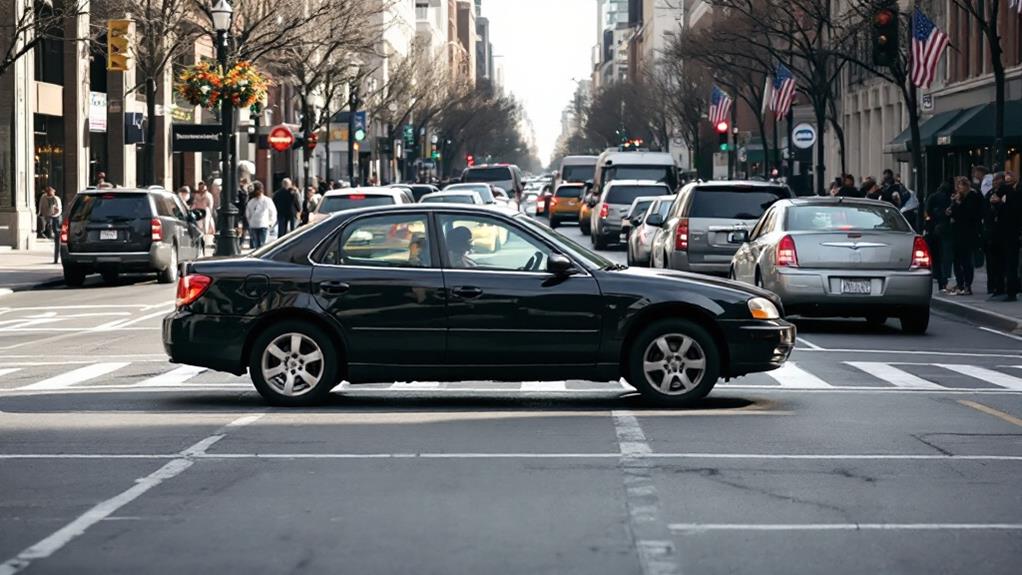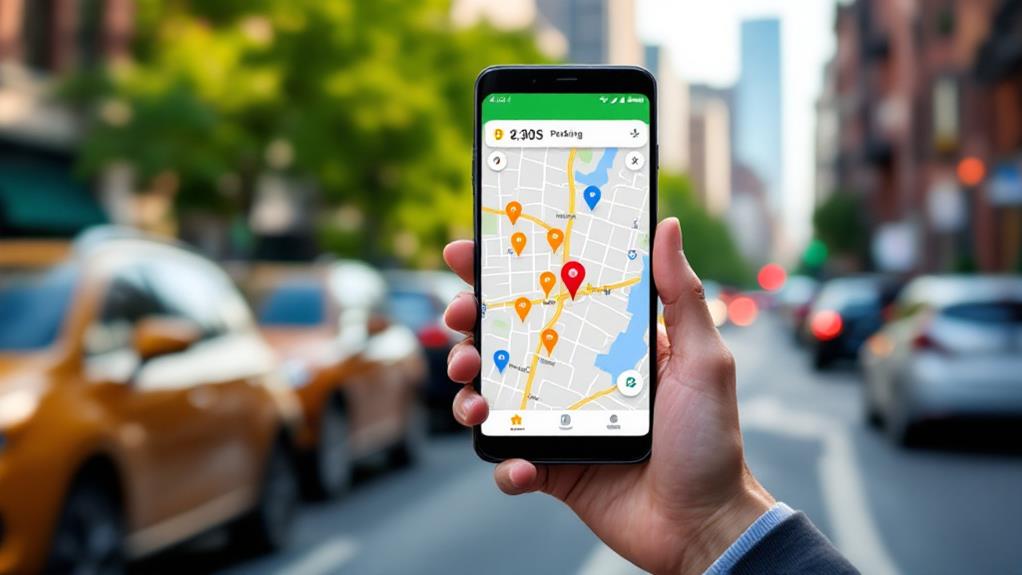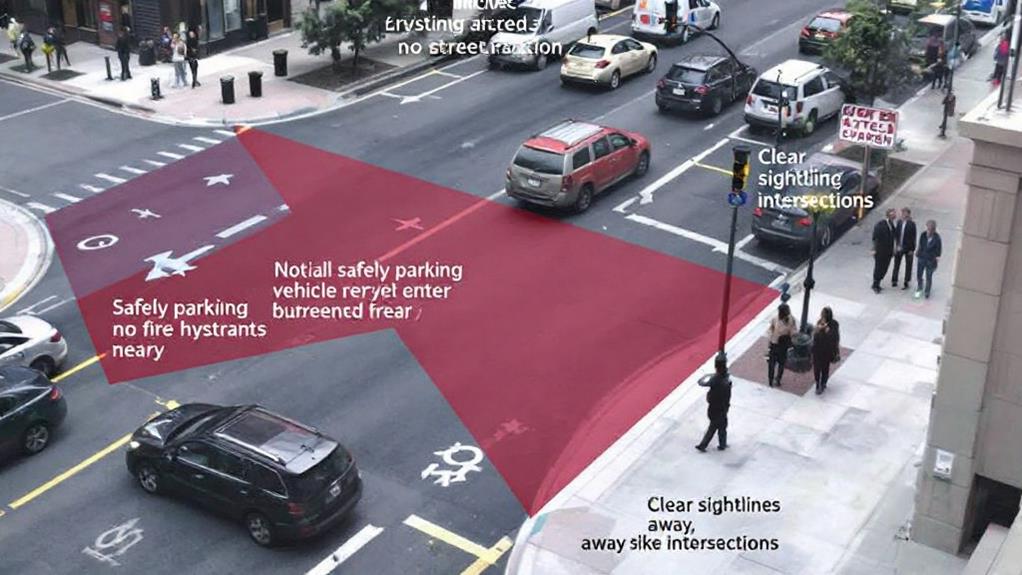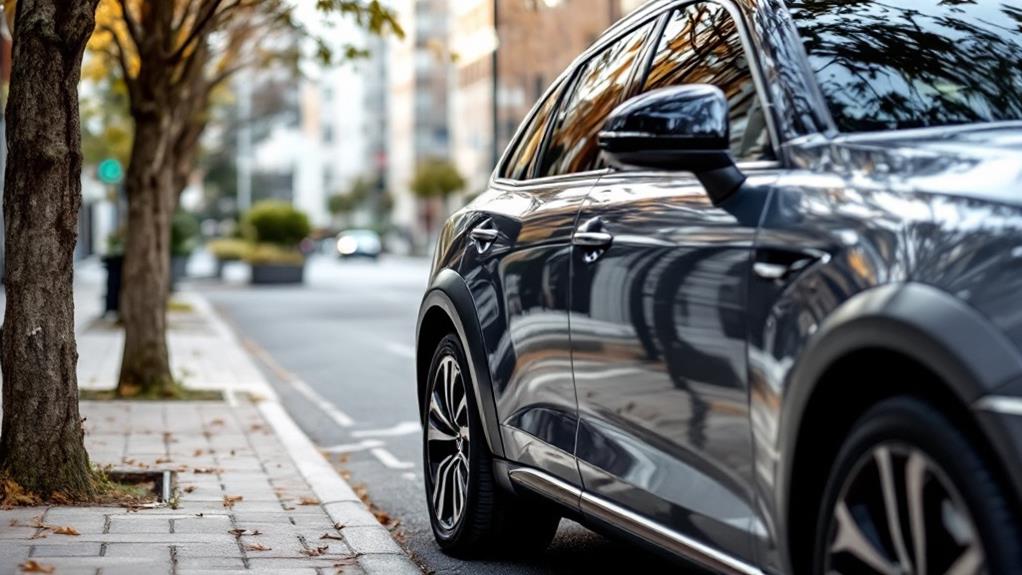How to Parallel Park Like a Pro on Busy Streets

To parallel park like a pro on busy streets, start by commanding the right mindset. Stay calm and focused, and choose a spot about 1.5 times your car's length. Position your vehicle parallel to the car in front, about 2-3 feet away. Execute a smooth reverse maneuver, turning the wheel right as you back up. Align your car by adjusting your angle and distance from the curb. When exiting, check your surroundings and signal before pulling out. Avoid common mistakes like misjudging space or forgetting to check blind spots. With these tips, you'll be well on your way to becoming a parallel parking expert.
Mastering the Parallel Parking Mindset
The key to successful parallel parking begins with your mindset. Cultivating a calm and focused approach is essential for commanding this often-dreaded maneuver. Understand that parallel parking requires precision, patience, and spatial awareness, but it's a skill you can develop with practice.
To overcome parking anxiety, identify your psychological barriers. Are you afraid of damaging your car or frustrated by tight parking spaces? Recognizing these fears allows you to address them head-on. Develop a systematic approach to parallel parking, breaking it down into manageable steps. This will help build your confidence and transform the task from daunting to straightforward.
Practice in low-stakes environments like empty parking lots to build muscle memory and decision-making skills. As you practice, use your mirrors effectively and focus on perfecting your technique. Tackle the challenge of parallel parking and maintain a positive attitude. Remember, each attempt is an opportunity to improve.
Choosing the Right Parking Spot
Choosing the right parking spot is half the battle when it comes to parallel parking. As you cruise down a busy street, keep your eyes peeled for an available parking space that's approximately 1.5 times the length of your vehicle. This extra room will give you the necessary space to maneuver your car safely into the spot.
Before you attempt to park, make sure your turn signals and brake lights are working properly. As you approach a potential parallel parking spot, use your turn signal to indicate your intention to park. This alerts other drivers to your plans and helps prevent confusion on the road.
Once you've found a suitable space, position your car parallel to the vehicle in front of the open spot. Align your rear bumper with theirs, maintaining a distance of about 2-3 feet from their side. This positioning sets you up for a successful parking maneuver.
Positioning Your Vehicle Correctly

Properly positioning your vehicle is essential for a successful parallel parking maneuver. Start by aligning your car parallel to the vehicle in front of the open space, keeping about 2-3 feet between your car and its side. This initial positioning sets the stage for a smooth parking process.
As you prepare to park, adjust your car's position as needed while constantly monitoring your distance from surrounding vehicles. Use your side mirrors and rearview mirror to gauge your proximity to the two parked cars flanking the space. Before shifting into reverse, thoroughly check all mirrors and blind spots for approaching traffic or obstacles.
To create a vivid image in your mind, imagine:
- Your car gliding smoothly alongside the parked vehicle
- Your hands firmly gripping the steering wheel, ready to turn
- Your eyes darting between mirrors, evaluating the space
- The open parking spot beckoning you to claim it
Once you're in position, start steering to the right as you move backward. As the front of your car passes the back bumper of the vehicle in front, begin turning the steering wheel left while continuing to reverse. If needed, move forward slightly to fine-tune your position within the space.
Executing the Perfect Reverse Maneuver
Once you've positioned your vehicle correctly, it's time to execute the reverse maneuver. Before you begin, check all your mirrors and blind spots to guarantee you're aware of your surroundings. This step is indispensable for safety throughout the parallel parking process.
Put your car in reverse and slowly begin to back up. As you move, gradually turn the steering wheel to the right. This motion will help align your vehicle with the parking spot. Keep an eye on your side mirror to assess your position relative to the curb and other cars.
As your car moves into the spot, start straightening the steering wheel. Once you've cleared the rear bumper of the car in front, turn the wheel to the left to bring your vehicle parallel to the curb. Remember to move slowly and make small adjustments as needed.
To finalize your position, you may need to inch your car backwards and forwards. This will help center your vehicle within the parking space. Throughout the process, remain vigilant of your surroundings and be prepared to stop if necessary. With practice, you'll become an expert in the art of parallel parking on busy streets.
Aligning and Adjusting Your Car

After executing the reverse maneuver, you'll need to fine-tune your car's position within the parking space. As you back up slowly, turn the wheel sharply to the right, positioning your vehicle at a 45-degree angle to the curb. Continuously check your surroundings and mirrors for traffic and pedestrians.
Once your rear bumper aligns with the front of the car ahead, straighten your wheels and continue reversing. When the right end of your rear bumper lines up with the front vehicle, turn the wheel all the way to the left and back up until you're parallel to the curb.
To complete the process, move forward slowly while straightening your wheels. This will center your car within the space. Remember to:
- Check for traffic before making any adjustments
- Use your mirrors and look over your shoulder
- Turn the wheel smoothly and deliberately
- Leave adequate space between your car and others
Exiting a Parallel Parking Space
Leaving your parallel parking spot can be as challenging as entering it, especially on busy streets. However, with a few easy steps, you can exit safely and confidently. First, ensure your car is parallel to the curb and your wheels are straight. Turn on your left signal to alert other drivers of your intention to leave.
Check your mirrors and blind spots for approaching vehicles, cyclists, or pedestrians. When it's clear, start your engine and shift into drive. Gently turn your steering wheel to the left while slowly moving forward. As your front wheels clear the car in front, straighten them and continue moving forward.
Once your rear wheels clear the front car, turn your steering wheel sharply to the right. This will bring your car's rear end away from the curb. Keep an eye on your mirrors as you smoothly accelerate into traffic. Remember, exiting a parallel parking space is an essential skill for every driver and is often included in driving tests. Practice these steps regularly to become more comfortable and proficient in various traffic conditions.
Common Mistakes to Avoid

While perfecting the technique of parallel parking is important, it's equally essential to be aware of common pitfalls. Many drivers make mistakes that can lead to frustration, damage, or even accidents. To become a pro at parallel parking, you'll need to practice and avoid these common errors.
One of the biggest mistakes is misjudging the size of your vehicle and the available space. Make sure you accurately assess whether your car can fit before attempting to park. Another error is turning the wheel too soon or too late, which can result in poor positioning. Parking requires patience and precision, so take your time and adjust as needed.
Some common mistakes to visualize and avoid include:
- Hitting the curb with your wheels
- Forgetting to check your mirrors and blind spots
- Blocking other vehicles or driveways
- Leaving too much space between your car and the curb
Parallel parking may seem challenging, but with practice and awareness of these common mistakes, you'll soon be maneuvering into tight spots like a pro. Remember to stay calm, use your mirrors, and always be mindful of your surroundings to guarantee a smooth parking experience.



